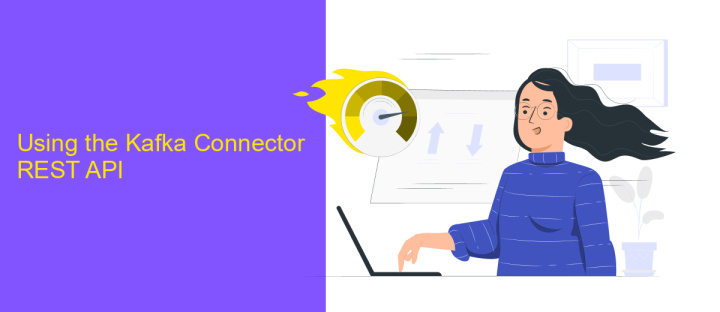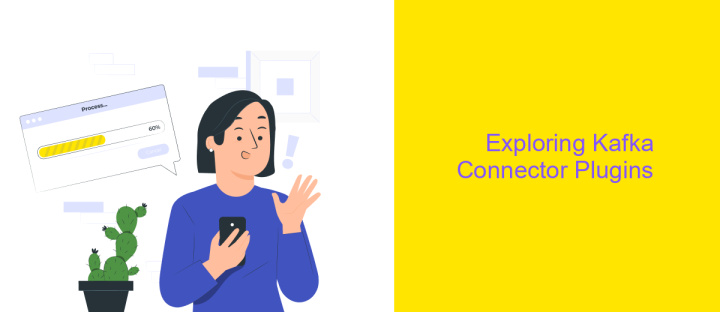Kafka Connector REST API
The Kafka Connector REST API serves as a powerful tool for managing and monitoring Kafka Connect, a framework designed to stream data between Apache Kafka and other systems. This API enables users to create, configure, and control connectors with ease, offering a seamless way to integrate diverse data sources. By leveraging this RESTful interface, businesses can enhance their data processing capabilities, ensuring efficient and reliable data flow across their infrastructure.
Introduction
The Kafka Connector REST API serves as a pivotal component in the ecosystem of Apache Kafka, enabling seamless integration and management of connectors. This API provides a standardized way to manage Kafka Connect clusters, making it easier for developers to deploy, configure, and monitor connectors. By leveraging the REST API, organizations can automate the management of data pipelines and ensure efficient data flow between various systems.
- Facilitates the creation and management of connectors with minimal manual intervention.
- Enables real-time monitoring and management of Kafka Connect clusters.
- Supports a wide range of operations, including connector configuration and status retrieval.
- Offers a scalable solution for integrating diverse data sources and sinks.
- Enhances automation capabilities through programmatic access to Kafka Connect functionalities.
By utilizing the Kafka Connector REST API, businesses can achieve greater agility and flexibility in handling their data integration needs. It empowers developers to build robust data pipelines that can adapt to changing requirements and scale efficiently. As organizations continue to embrace data-driven strategies, the Kafka Connector REST API stands out as an essential tool for achieving seamless data integration and operational excellence.
Using the Kafka Connector REST API

The Kafka Connector REST API provides an efficient way to manage and monitor connectors within a Kafka Connect cluster. By leveraging this API, developers can easily create, configure, and delete connectors, as well as check their status and manage tasks. This flexibility allows for seamless integration of various data sources and sinks, enabling real-time data streaming and processing. The API is designed to be user-friendly, making it accessible even for those who are new to Kafka Connect. With a few HTTP requests, you can automate and streamline the management of your data pipelines.
For those looking to simplify their integration processes further, services like ApiX-Drive can be invaluable. ApiX-Drive offers a user-friendly interface and robust automation capabilities, allowing users to connect Kafka with numerous applications without writing code. By combining the Kafka Connector REST API with ApiX-Drive, organizations can achieve a powerful, automated data flow, enhancing operational efficiency and reducing the time spent on manual configurations. This synergy ensures that businesses can focus on deriving insights from their data rather than managing the infrastructure.
Managing Kafka Connectors

Managing Kafka connectors effectively is crucial for ensuring seamless data integration and processing within your Kafka ecosystem. To begin with, it's essential to understand the configuration and lifecycle of each connector. Connectors can be managed via the Kafka Connect REST API, which allows you to create, configure, pause, resume, and delete connectors as needed. This API provides a flexible interface to interact with your connectors programmatically.
- Start by listing all available connectors using the GET /connectors endpoint. This will help you track which connectors are currently active and their configurations.
- To create a new connector, use the POST /connectors endpoint with the appropriate configuration details in the request body.
- If a connector needs to be paused or resumed, utilize the PUT /connectors/{name}/pause or PUT /connectors/{name}/resume endpoints, respectively.
- For updating a connector’s configuration, the PUT /connectors/{name}/config endpoint is used, allowing you to modify settings without downtime.
- Finally, if a connector is no longer needed, remove it using the DELETE /connectors/{name} endpoint.
By following these steps, you can efficiently manage your Kafka connectors, ensuring they operate optimally and align with your data processing requirements. Regular monitoring and maintenance of connectors will help in maintaining data flow consistency and system reliability.
Exploring Kafka Connector Plugins

Apache Kafka Connect is a powerful tool that simplifies the integration of various data systems with Kafka. One of the key components of Kafka Connect is its plugins, which extend the functionality of connectors. These plugins are essential for enabling seamless data flow between Kafka and external systems. Understanding how to explore and utilize these plugins can significantly enhance your data integration processes.
To effectively explore Kafka Connector plugins, you need to familiarize yourself with their capabilities and configurations. Plugins are typically categorized into source and sink connectors, each serving a distinct purpose. Source connectors ingest data from external systems into Kafka, while sink connectors export data from Kafka to other systems. By exploring these plugins, you can customize and optimize your data pipelines according to your specific requirements.
- Source Connectors: Enable data ingestion from various external systems into Kafka.
- Sink Connectors: Facilitate the export of data from Kafka to different target systems.
- Transformations: Allow data manipulation and transformation within the pipeline.
- Converters: Handle data serialization and deserialization for seamless data exchange.
Exploring Kafka Connector plugins involves identifying the right connectors for your use case, configuring them appropriately, and leveraging their features to build efficient data pipelines. By doing so, you can ensure that your data integration processes are both robust and scalable, meeting the demands of your organization's data strategy.
Advanced Topics and Troubleshooting
When dealing with Kafka Connector REST API, one advanced topic to consider is the optimization of connector configurations for high-throughput scenarios. Fine-tuning parameters such as batch size, buffer memory, and retry intervals can significantly enhance performance. It's crucial to monitor and adjust these settings based on the specific workload and data flow characteristics to minimize latency and maximize throughput. Additionally, implementing robust error handling mechanisms is vital. This includes setting up dead letter queues and leveraging retry policies to manage message failures gracefully.
Troubleshooting Kafka Connector issues often involves diagnosing connectivity problems and data inconsistencies. Ensure that network configurations and security settings, such as SSL/TLS, are correctly implemented. Tools like ApiX-Drive can simplify integration processes by providing a user-friendly interface to connect various applications, potentially reducing configuration errors. Logging and monitoring are essential for identifying the root cause of issues. Utilize Kafka's built-in metrics and third-party monitoring solutions to gain insights into connector performance and system health. Regularly reviewing logs can help detect anomalies early and prevent potential disruptions.
FAQ
What is Kafka Connector REST API, and how does it work?
How can I create a new connector using the REST API?
What are some common issues when using Kafka Connector REST API?
How do I monitor the status of a connector?
Is there an easy way to automate Kafka Connector configurations?
Time is the most valuable resource for business today. Almost half of it is wasted on routine tasks. Your employees are constantly forced to perform monotonous tasks that are difficult to classify as important and specialized. You can leave everything as it is by hiring additional employees, or you can automate most of the business processes using the ApiX-Drive online connector to get rid of unnecessary time and money expenses once and for all. The choice is yours!

